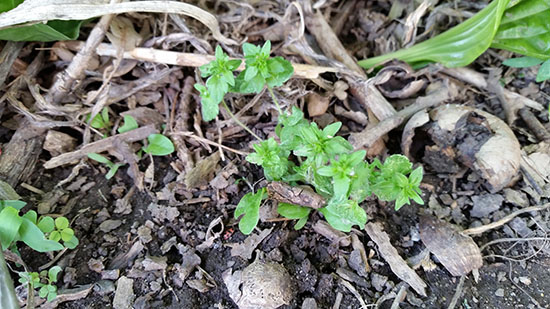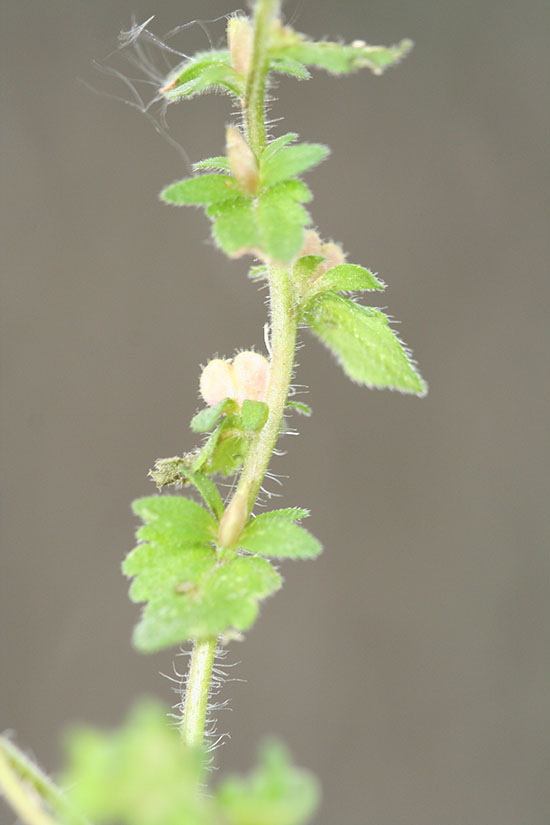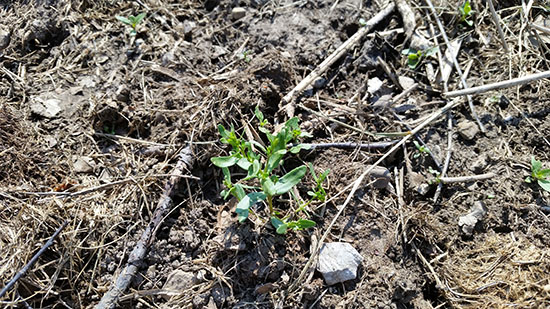Issue 4, May 21, 2018
Speedwells
These little plants have really escaped my attention over the years. Because they are low growing and their populations seem to be less abundant than their better-known counterparts of henbit and chickweed, they are often overlooked. For some reason, the populations are very high this spring. Perhaps the growing conditions have been perfect for it with the cool temperatures we had for so long. Several types of speedwell also prefer shady conditions.

Speedwell.
To add to the lack of familiarity surrounding these weeds, there are actually several species of speedwells (Veronica), which can create some confusion. Many are very similar in appearance with slight differences in leaf arrangement and leaf margin. The book, Weeds of the Northeast features a table that compares nine species, many of which can be found growing in Illinois.

Corn speedwell seedling.
Many speedwells are attractive with their low growing, compact growth, dark foliage, and small flowers. They have close relatives that are ornamental types available in nurseries. It can be tempting to leave these weedy types untouched in the landscape. Many of these are winter annuals that are short lived with the impending heat of the summer. Bear in mind that seed will be left behind to ensure a more abundant population and resulting greater presence the following year. Some of the more common species in Illinois (corn speedwell, Persian speedwell, and purslane speedwell) are winter annuals, but some types are perennial.

Corn speedwell.
The flowers are 4-petaled, small and white, blue, purple, or pink, with certain types having dark colored stripes. Flowers are found in the spring. The seed capsule is generally heart-shaped but can be four-lobed on certain types.

Purselane speedwell.
Speedwells are found typically in lawns, gardens, roadsides, and fields and can be a particular problem in spring turfgrass seedings. Fortunately, they are shallow rooted and can be easily hand pulled or removed with a hoe. For turfgrass situations, mowing higher will help to shade out this weed. Postemergent herbicide options that have resulted in good control include: triclopyr, fluroxypyr, sulfentrazone, mesotrione, and carfentrazone. Various 3- and 4-way products are available that are combinations of these active ingredients. Preemergent herbicides could also be used in the fall or early spring to prevent seed germination. Read and follow all herbicide labels carefully. (Michelle Wiesbrook)
Author:
Michelle Wiesbrook